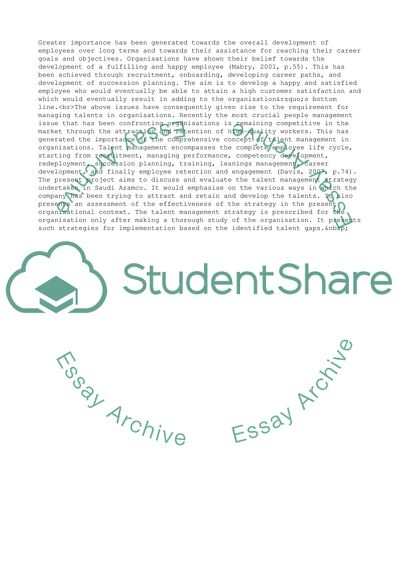Cite this document
(Importance of Collaborating Employees towards Attainment of Saudi Research Paper - 1, n.d.)
Importance of Collaborating Employees towards Attainment of Saudi Research Paper - 1. Retrieved from https://studentshare.org/management/1751474-evaluate-the-current-talent-management-tm-strategy-at-any-well-known-organization-in-saudi-arabia
Importance of Collaborating Employees towards Attainment of Saudi Research Paper - 1. Retrieved from https://studentshare.org/management/1751474-evaluate-the-current-talent-management-tm-strategy-at-any-well-known-organization-in-saudi-arabia
(Importance of Collaborating Employees towards Attainment of Saudi Research Paper - 1)
Importance of Collaborating Employees towards Attainment of Saudi Research Paper - 1. https://studentshare.org/management/1751474-evaluate-the-current-talent-management-tm-strategy-at-any-well-known-organization-in-saudi-arabia.
Importance of Collaborating Employees towards Attainment of Saudi Research Paper - 1. https://studentshare.org/management/1751474-evaluate-the-current-talent-management-tm-strategy-at-any-well-known-organization-in-saudi-arabia.
“Importance of Collaborating Employees towards Attainment of Saudi Research Paper - 1”, n.d. https://studentshare.org/management/1751474-evaluate-the-current-talent-management-tm-strategy-at-any-well-known-organization-in-saudi-arabia.


